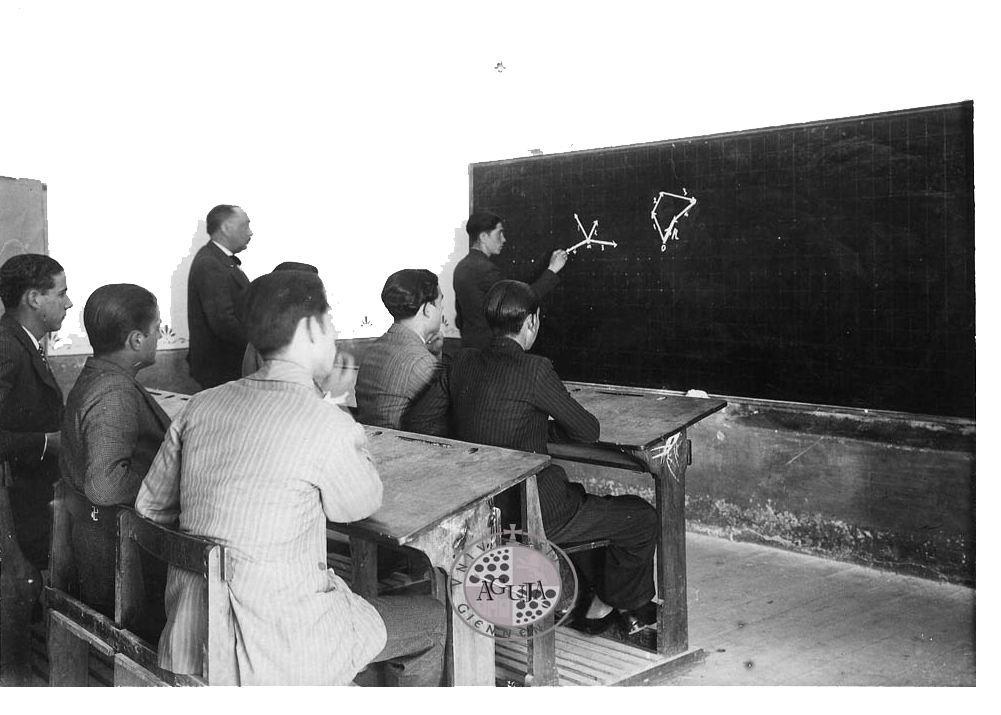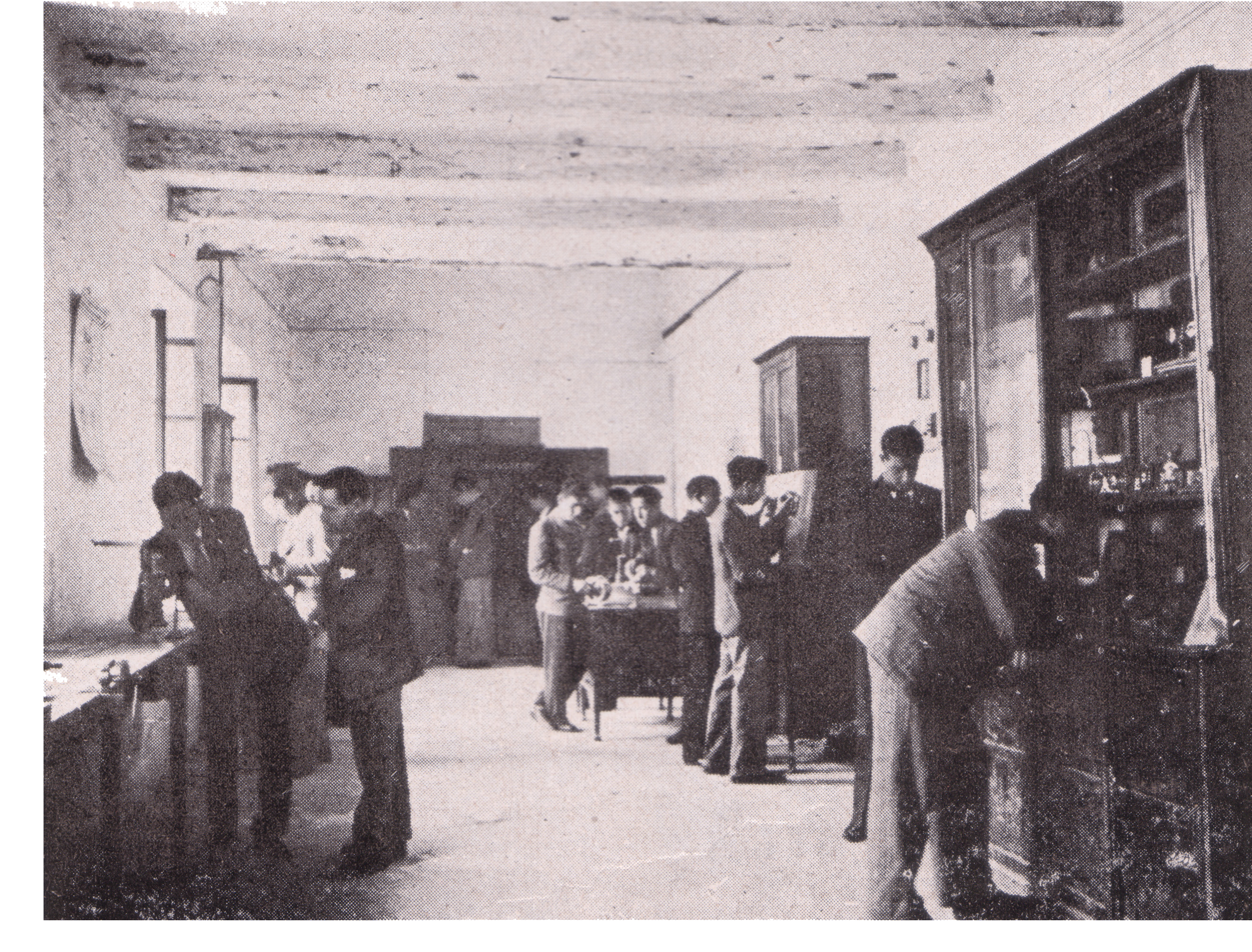The history of the University of Jaén can be traced back to the modern era and the University of Baeza, as well as to the 17th century, when Santa Catalina Convent School was briefly converted into a Pontifical University.
 Prior to this, in 1368, the site was home to a Grammar School that also taught Rhetoric, Logic and Liberal Arts. At the end of the modern era, urban centres such as Úbeda, Baeza, Andújar, Alcalá la Real and Jaén itself were booming and this economic growth and the political circumstances present at the time allowed for a university to be established. In 1382, Juan I founded Santa Catalina Convent School, which was overseen by the Order of Santo Domingo.
Prior to this, in 1368, the site was home to a Grammar School that also taught Rhetoric, Logic and Liberal Arts. At the end of the modern era, urban centres such as Úbeda, Baeza, Andújar, Alcalá la Real and Jaén itself were booming and this economic growth and the political circumstances present at the time allowed for a university to be established. In 1382, Juan I founded Santa Catalina Convent School, which was overseen by the Order of Santo Domingo.
The school was located at the Convent of Santo Domingo and taught Liberal Arts and Theology. Following the intervention of local official Juan Cerezo, Pope Paul III issued a bull in 1503 that authorised Santa Catalina Convent School to teach Liberal Arts, Medicine, Theology and other sciences. In 1585, with help from several members of the cathedral chapter and without permission from Bishop Sarmiento, the Augustinians attempted to establish a University of Humanities similar to the one in Baeza, which was created in 1538. However, fierce opposition from the Bishop and some canons, who were closely involved with the University of Baeza, caused the endeavour to fail. In 1629, Pope Urban VIII issued a bull transforming Santa Catalina Convent School into a Pontifical University; the University of Baeza launched a lawsuit that it won the following year and Jaén ceased to be a university city.
 The main university in the area thus continued to be the University of Baeza, which was founded by Rodrigo López, a notary and relative of Pope Paul III. From the very beginning, the university drew active support from the large noble population of bourgeois Jewish converts from the Society of Jesus and the Carmelite Order, and even Saint John of the Cross participated in the seminars held there. The Faculties of Arts and Theology were part of the university from its creation, while the Faculty of Canons was created in 1683. The University of Baeza’s decline was closely linked to the historical events that shaped the province of Jaén until modern times. Increasing ruralisation reduced the urban population and prompted the aristocratic class to leave for the Court or other large cities where they could invest or spend their resources as they found no incentive to remain in crisis-stricken cities. Local lawsuits and a lack of academic innovation combined with economic decline, which affected the textile sector in Baeza in particular, and a decree was passed in 1807 to shut down the University of Baeza, which closed permanently in 1824.
The main university in the area thus continued to be the University of Baeza, which was founded by Rodrigo López, a notary and relative of Pope Paul III. From the very beginning, the university drew active support from the large noble population of bourgeois Jewish converts from the Society of Jesus and the Carmelite Order, and even Saint John of the Cross participated in the seminars held there. The Faculties of Arts and Theology were part of the university from its creation, while the Faculty of Canons was created in 1683. The University of Baeza’s decline was closely linked to the historical events that shaped the province of Jaén until modern times. Increasing ruralisation reduced the urban population and prompted the aristocratic class to leave for the Court or other large cities where they could invest or spend their resources as they found no incentive to remain in crisis-stricken cities. Local lawsuits and a lack of academic innovation combined with economic decline, which affected the textile sector in Baeza in particular, and a decree was passed in 1807 to shut down the University of Baeza, which closed permanently in 1824.
From that moment on, university study in Jaén centred around the two schools created in the city in 1843: the Teacher Training School and the Secondary School. The aspirations of the mining industry and the presence of an industrial bourgeoisie prompted the founding of the Mining School in Linares in 1892. Meanwhile, in 1911, the Intermediate Technical Training School to prepare electrical and mechanical technicians opened in Jaén, followed by the Higher Teacher Training School in 1913. These institutions were very similar to universities, but were not officially labelled as such.
Another step towards university status occurred in 1945, when training for mercantile technicians began to be delivered at the Technical Trade School. In 1951, the Industrial School in Jaén reopened after being closed in 1937 due to the Civil War; the school in Linares had reopened in 1939/40 when the conflict came to an end. A second Teacher Training School, the ‘Sagrada Familia’, was opened in Úbeda in 1949. In 1954, Jaén Provincial Council founded the Provincial Welfare Nursing School.
Around the 1970s, the demographic context and a political model that encouraged universities to disperse by founding university colleges created favourable conditions for the Academic Activities Seminar organised in 1969 at the Institute of Jaén Studies to revive the university project in Jaén. In April 1970, Jaén Provincial Council provided the funds required to found a university college. The application submitted to the Ministry of Education and Science by the Council in July 1971 was approved in October that same year. However, the college was not affiliated with the University of Granada until November 1975.
Prior to this, in 1972, the Teacher Training School had become the University Teacher Training College and the School of Industrial Technical Engineering had become the University School of Industrial Technical Engineering. In 1976, Linares Polytechnic School underwent a similar fate, joining the group of municipal university centres in Jaén province, which also included the Antonia López Arista University School of Teacher Training. Finally, the rest of the schools in Jaén province joined the group in 1978: the Technical Trade School, which became the University School of Business Studies, the Nursing School and the Sagrada Familia School in Úbeda.
In 1982, the University College joined the University of Granada, although it was not fully integrated until January 1985.
The penultimate stage in the process began in 1989, when the University College was broken up into a Faculty of Humanities and a Faculty of Experimental Sciences. In 1990, the Faculty of Social and Legal Sciences was created. During the previous year, Jaén University School of Industrial Technical Engineering became a Polytechnic School and the University of Granada created Jaén University Campus; the existing centres in the city were immediately affiliated with the new institution, while the remaining centres in the province were affiliated in 1992/93.
The final stage began with the creation of the Jaén University Campus Technical & Academic Committee in May 1992 and the institution’s permanent conversion to the University of Jaén under Law 5/1993 of 1 July 1993, approved by the Andalusian Parliament. The university formally began to operate on 7 September 1993, when the Management Committee was established.
Providing a regulatory instrument for the university’s self-governance, the University of Jaén statutes were approved by the University Senate on 9 June 1998 and by the Governing Council of the Andalusian Regional Government via Decree 277/1998 on 22 December, published in issue 8 of the Official Gazette of the Andalusian Regional Government on 19 January 1999.
Once all the legal requirements had been met, the University of Jaén was fully integrated into the Spanish university system and able to exercise its autonomy under Article 27.10 of the 1978 Spanish Constitution.
